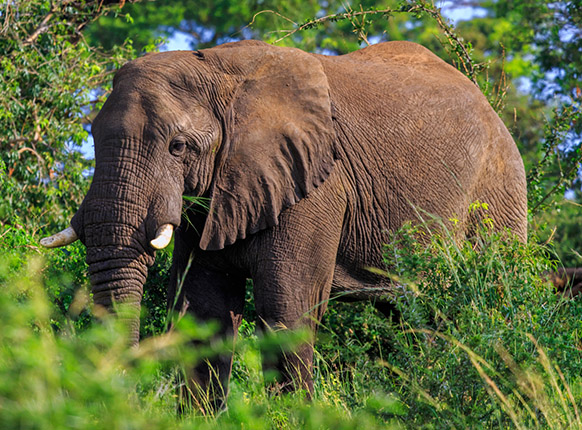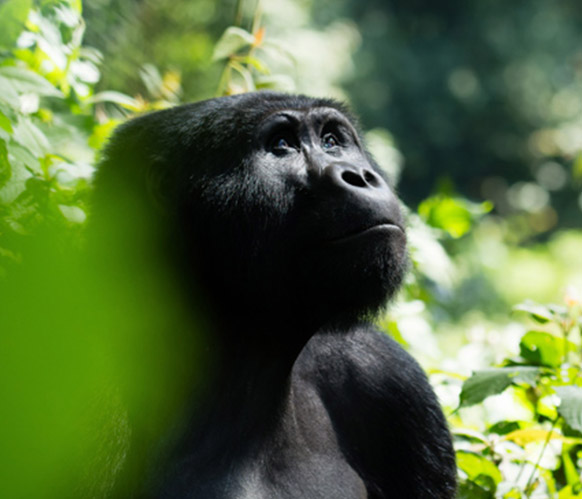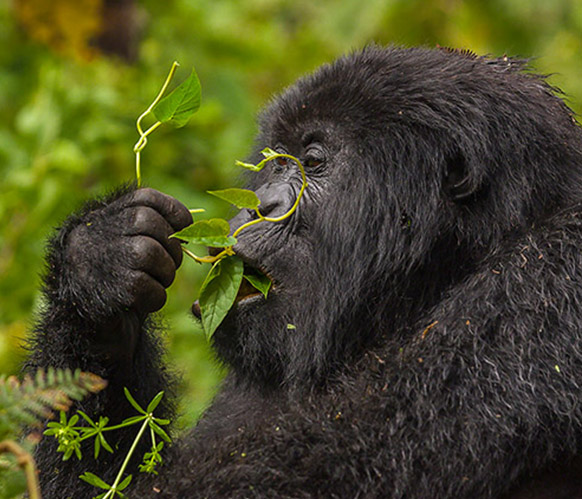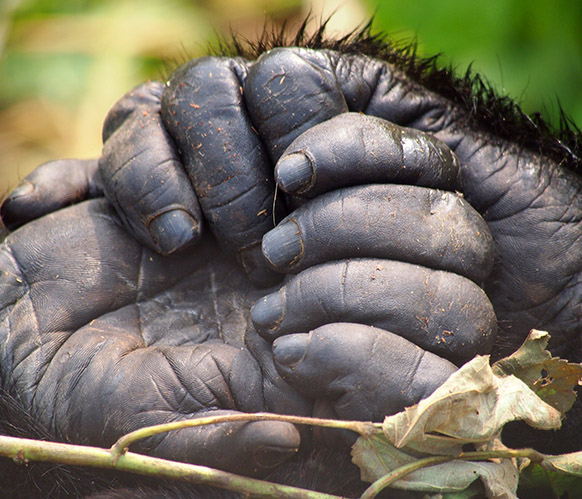Best Time to Trek Gorillas
Uganda’s strategic location in the equatorial region, along the equator guarantees a beautiful warm and tropical climate with insignificant seasons. This makes the country an all year round destination.
Even if there are wetter days and drier days that make some activities and plans somewhat trickier and more hectic, the fact is that temperatures in Uganda are always around 21.5 celcius degrees during day time and they fall to about 12 celcius degrees at night. For the rainfall is between 1000 and 2000 millimeters per year.
It is important to know when to best come for Uganda safaris. Travelers would come for an exception game viewing experience in Murchison Falls national park, just to hit the country in a wet season where it could rain for long hours to keep the animals in their hibernations. Or maybe, one would yearn to experience an amazing time at the white sand beaches of Ssese islands just to find a very cold weather that cannot allow him to take off a sweater.
It is important to know when to best come for Uganda safaris. Travelers would come for an exception game viewing experience in Murchison Falls national park, just to hit the country in a wet season where it could rain for long hours to keep the animals in their hibernations. Or maybe, one would yearn to experience an amazing time at the white sand beaches of Ssese islands just to find a very cold weather that cannot allow him to take off a sweater.
Gorilla trekking, being a highlight of almost all safaris in Uganda yet still costing a little bit a lot of money, it’s equally vital to know when to best trek the endangered apes of the forest.
Uganda has two weather seasons, the wet and dry season. However, being positioned along the equator, even in a wet season, it doesn’t rain all day, the sun still comes out, just like in the dry season, some rainfalls are still received.
Trekking the gorillas in Uganda is best done in the dry season; from December to February and June to September. These months are commonly known as the high/peak seasons of tourism. This period has less or no rainfalls, giving you the maximum time to trek the gorillas at your convenience and have a clear view of the surrounding natural beauty. In this season, you are saved the burden of walking in slippery trails as they are likely to be dry since there are no rains. Trekking the gorillas in the dry season is also health as it allows trekkers to sweat for fats and dirt to move out of their bodies.
Trekking the gorillas in Uganda is best done in the dry season; from December to February and June to September. These months are commonly known as the high/peak seasons of tourism. This period has less or no rainfalls, giving you the maximum time to trek the gorillas at your convenience and have a clear view of the surrounding natural beauty. In this season, you are saved the burden of walking in slippery trails as they are likely to be dry since there are no rains. Trekking the gorillas in the dry season is also health as it allows trekkers to sweat for fats and dirt to move out of their bodies.
Note that, this being the best time to visit the gorillas, permits and hotels are always over booked, so it’s advisable that you book them like in three months’ advance to avoid last minute disappointments.
Either way, visiting the gorillas in the wet or low season is equally thrilling. Though you are likely to be interrupted with heavy rains and thick fog that won’t allow you have sights of the beautiful views, you will still enjoy some benefits that trekkers in the high season didn’t.
Trekking in the low season gives you the comfort of fewer trekkers, meaning that you have enough time and space for pictures without competing. You get personal attention from the park rangers the fact that trekkers are few. Visitors in the wet season enjoy the low prices of accommodation, hotels and lodges tend to lower their rates to attract clients.
Remember gorilla trekking in Uganda is done in Bwindi impenetrable forest national park; a home to almost 50% of the remaining total population of mountain gorillas. Some trekkers head to Mgahinga national park the second home of the apes in Uganda.
Other places to visit the gorillas in Africa and the world at large are like Volcanoes national park in Rwanda and Virunga national park in the Democratic Republic of Congo.
Other places to visit the gorillas in Africa and the world at large are like Volcanoes national park in Rwanda and Virunga national park in the Democratic Republic of Congo.
Important to note is the mountain gorillas are endangered species, even if several efforts have been put in place for conservation issues, still the rightest time to visit the gorillas is now. Book that ticket now.
 info@thegorillatrekking.com
info@thegorillatrekking.com  +256 392 177 127
+256 392 177 127 




